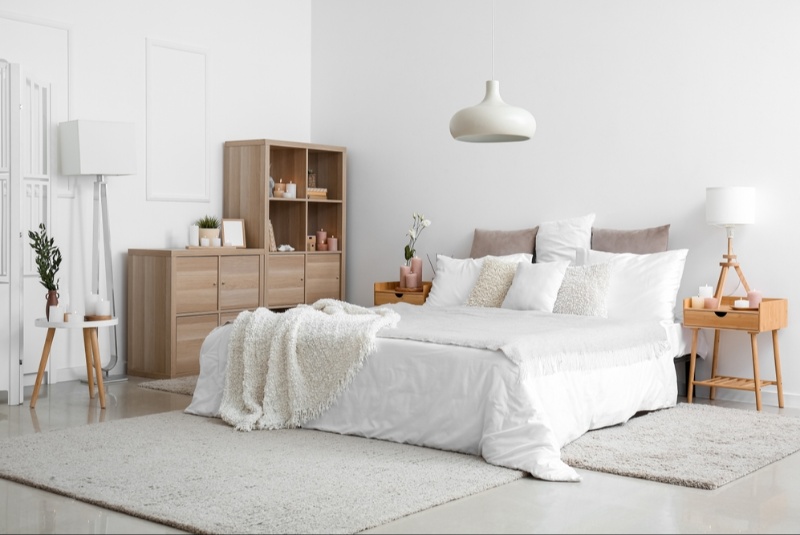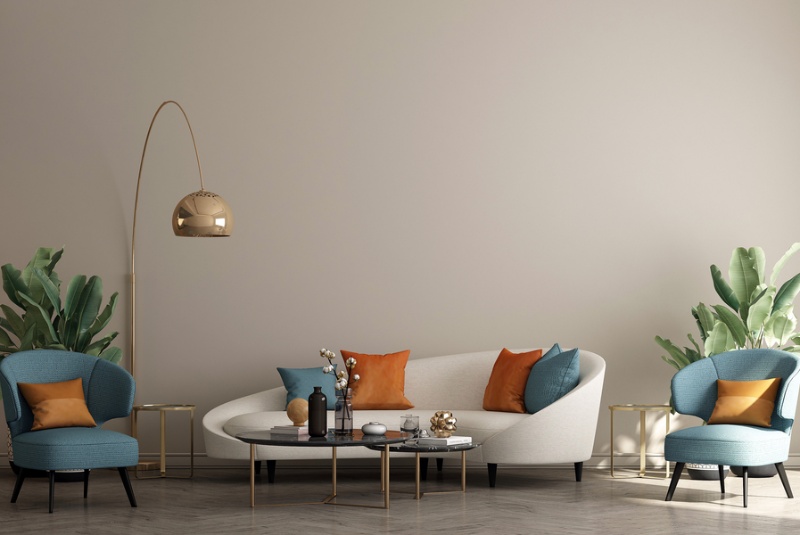High-quality bedding is essential for a good night's sleep and overall well-being. The right bedding can enhance comfort, regulate temperature, and improve the aesthetics of your bedroom. With countless options available, choosing the best bedding can be overwhelming. This guide will walk you through the key factors to consider when selecting high-quality bedding, ensuring you invest in pieces that offer comfort, durability, and style.
Understanding Thread Count
Thread count refers to the number of horizontal and vertical threads per square inch of fabric. While a higher thread count often indicates softer and more durable sheets, it’s not the sole determinant of quality. A thread count between 200 and 800 is generally considered good, with luxury sheets sometimes exceeding 1,000. However, the quality of the threads themselves—such as long-staple cotton—can be just as important. Understanding thread count helps you make informed choices without being misled by marketing claims.
Choosing the Right Fabric
The fabric of your bedding significantly impacts its feel, durability, and care requirements. Cotton is a popular choice due to its softness, breathability, and versatility. Egyptian and Pima cotton are high-quality varieties known for their long fibers and smooth texture. Linen is another excellent option, especially for warmer climates, as it is highly breathable and moisture-wicking. Silk offers a luxurious feel and hypoallergenic properties, while synthetic fabrics like microfiber can be affordable and easy to maintain. Consider your personal preferences and any allergies when selecting bedding fabrics.
Evaluating Weave Types
The weave of your bedding affects its texture and durability. Common weaves include percale, sateen, and twill. Percale is a plain weave known for its crisp, cool feel, making it ideal for hot sleepers. Sateen has a satin-like finish with a smooth, lustrous surface, providing a softer and more luxurious feel. Twill is characterized by its diagonal weave, offering durability and a slightly textured finish. Understanding these differences helps you choose bedding that matches your comfort needs and aesthetic preferences.
Considering Fabric Finishes
Fabric finishes can enhance the appearance and performance of your bedding. Mercerization is a common treatment for cotton that increases luster and strength, making the fabric more durable and resistant to shrinkage. Some bedding is treated with wrinkle-resistant finishes to reduce the need for ironing. While these finishes can add convenience, they may also involve chemicals that could irritate sensitive skin. Weigh the benefits and potential drawbacks of fabric finishes to find bedding that meets your needs and preferences.
Assessing Fit and Sizing
Properly fitting bedding is crucial for comfort and aesthetics. Standard sizes include Twin, Full, Queen, King, and California King, but measurements can vary slightly between brands. Check the dimensions of your mattress, including its depth, to ensure your sheets and mattress protectors fit snugly without slipping. Deep-pocket sheets are available for thicker mattresses or those with toppers. Investing in well-fitting bedding prevents frustration and ensures a neat, polished look for your bed.
Prioritizing Comfort and Temperature Regulation
High-quality bedding should enhance your sleep by maintaining a comfortable temperature. Natural fibers like cotton and linen are breathable and moisture-wicking, keeping you cool in summer and warm in winter. Wool and silk also offer excellent temperature regulation and can be suitable for different climates. Consider your personal sleeping habits and whether you tend to sleep hot or cold. Choosing bedding that regulates temperature effectively can significantly improve your sleep quality.

Exploring Hypoallergenic Options
For those with allergies or sensitive skin, hypoallergenic bedding can make a significant difference. Materials like silk, bamboo, and certain types of cotton naturally resist dust mites and other allergens. Additionally, some bedding is treated to enhance its hypoallergenic properties. Look for products labeled hypoallergenic and read reviews to ensure they meet your needs. Investing in hypoallergenic bedding can reduce allergy symptoms and contribute to a healthier sleep environment.
Evaluating Durability and Care Requirements
Durability is a key factor in choosing high-quality bedding. Consider the fabric’s strength, the quality of stitching, and how the bedding is constructed. Long-staple cotton and linen are known for their durability, while tightly woven fabrics like percale can withstand frequent washing. Check care instructions to ensure the bedding is easy to maintain. Some high-quality materials may require special care, such as dry cleaning or gentle washing, but offer long-term benefits in comfort and longevity.
Aesthetic Appeal and Design
Bedding is a significant part of your bedroom’s decor, so consider its aesthetic appeal. From classic whites and neutrals to bold patterns and colors, choose bedding that complements your style and the overall design of your bedroom. High-quality bedding often comes in a wide range of designs, allowing you to express your personality and create a cohesive look. Investing in stylish bedding can enhance the ambiance of your room and make it a more inviting space.
Considering Sustainable and Ethical Options
Sustainability and ethical production practices are increasingly important to many consumers. Look for bedding made from organic materials, which are grown without harmful chemicals and pesticides. Certifications such as GOTS (Global Organic Textile Standard) and Fair Trade indicate that the bedding meets rigorous environmental and social standards. Choosing sustainable and ethically produced bedding supports responsible manufacturing practices and can contribute to a healthier planet.
Comparing Prices and Value
High-quality bedding is an investment, so it’s essential to consider both price and value. While luxury bedding can be expensive, it often offers superior comfort, durability, and design. However, there are also excellent options available at more affordable price points. Compare different brands and read reviews to find bedding that offers the best balance of quality and cost. Investing in high-quality bedding can lead to better sleep and increased satisfaction in the long run.
Selecting high-quality bedding involves considering various factors, from fabric and weave types to fit, comfort, and durability. By understanding your personal preferences and needs, you can make informed decisions that enhance your sleep and overall well-being. High-quality bedding not only provides superior comfort but also adds aesthetic value to your bedroom. Whether you’re looking for luxurious silk sheets or durable cotton sets, taking a thoughtful approach to choosing your bedding ensures you invest in pieces that offer lasting benefits and satisfaction. Enjoy a restful night’s sleep with bedding that meets your highest standards for quality and comfort.




